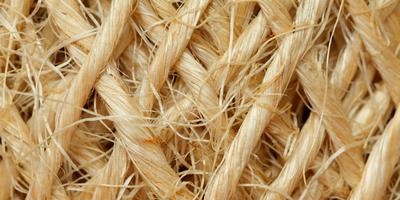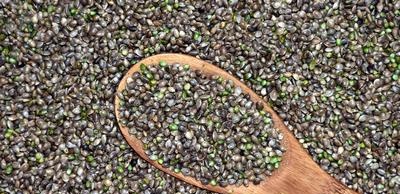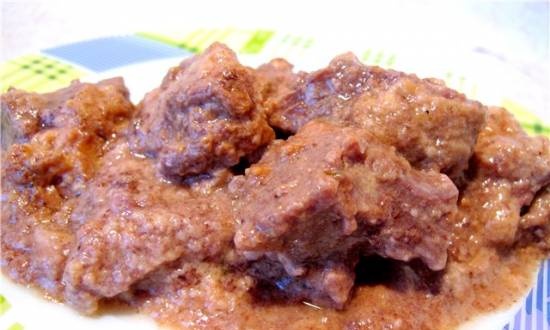|
 In previous years, peasants always considered hemp to be a special creature. Plant number one. Even the daily bread - wheat and rye faded into the background. Wheat was sown wherever necessary. Hemp was assigned a plot next to the estate, so that you could always see how she lived there. In previous years, peasants always considered hemp to be a special creature. Plant number one. Even the daily bread - wheat and rye faded into the background. Wheat was sown wherever necessary. Hemp was assigned a plot next to the estate, so that you could always see how she lived there.
Crop rotations, too, did not seem to concern the chosen one. Sowed in one place for countless years. And the soil did not get tired, as under the linen or clover. True, they did not spare manure for their ward. They carried hundreds of carts, shamelessly depriving wheat and rye, surprising the then few agronomists. Those were indignant: how much? But there was nothing they could do. Tradition!
The reasons for this preference were very good. Let's start in order. Why the chosen one? Yes, for the simple reason that it is a profitable culture. Half of Russia until the end of the last century dressed in hemp linen. Why close to home? To make it easier to transport manure.
And in order to carry raw materials closer to the lobe. Why so much manure? No wonder, of course. Of all crops, hemp is the most depleting of the soil. We must make up for what we have taken. Replenished. And where the limit, no one could establish. Focused on wheat. If you dump too much, the bread will fall. This is a signal: there is enough fertilizer. The hemp didn't die. We thought it was a good sign, what else could be added. However, hemp never lays down, no matter how much dung or luggage. Until now, this has remained unclear, and in fact it is extremely important to reveal the secret of noninvasion.
As for manure, with an excess of its fiber becomes worse. Its walls are getting thinner. The fortress is lost ...
In general, the fate of hemp was a lot of controversial and incomprehensible. Start with fiber. Even though Russia was dressing in hemp fabrics, hemp fiber was used more for rough products. On ropes, sails and tarpaulin. And it still goes. They say that Prophetic Oleg owes his successes to this plant. When he was returning from a campaign against Constantinople, 2,000 ships had to be equipped. Ropes, sails - all hemp. Abroad, experts have done a lot of magic over hemp and came to the conclusion that it is only suitable for ropes. You can't get fine, fine fabrics. Before flax long away.
Our Russian specialists also agreed with them. Only one Kursk landowner M. Puzanov disagreed. He passionately dreamed of making fabrics from hemp that were not inferior to linen. Perhaps Puzanov would not have had to surprise the world if not for his love for mills. He could sit for hours watching the work of the millstones, in awe of this ingenious and simple invention. With trepidation, he watched as the faceted buckwheat grain, passing between the millstones, loses its black rustling husk. The thought came: what if you skip a hemp between the millstones? The fact is that it also contains a lot of "husks" - those adhesives that firmly bind the bast fibers. And although for centuries hemp was ruffled and crumpled in order to knock out the excess, a lot of it remained and spoiled the product.
 No sooner said than done. The millstones crumple and beat the hemp. "Cement" is loosened. The finest filaments are released. In general, by the end of the 70s of the last century, Puzanov managed to make fabrics that were not always made from flax. At the Moscow Agricultural Exhibition, the jury unanimously awarded him a gold medal. They sent samples to Paris, which surprised the then textile authorities to the extreme. No sooner said than done. The millstones crumple and beat the hemp. "Cement" is loosened. The finest filaments are released. In general, by the end of the 70s of the last century, Puzanov managed to make fabrics that were not always made from flax. At the Moscow Agricultural Exhibition, the jury unanimously awarded him a gold medal. They sent samples to Paris, which surprised the then textile authorities to the extreme.
Emboldened by his luck, Puzanov ponders a new problem. It's more complicated. The bottom line is this. Hemp is dioecious. Some of the plants with male flowers are deserted. The other part with the women is the mother. Both provide fiber. But at different times. Get it early, mother later. If you wait for the mother to ripen, it will slowly ripen. If you remove it earlier, the grain will not ripen.And grain is seed and oil. The oil is tasty, beautiful, slightly greenish.
They adapted this way: as soon as it matures, they pull it back. Womens leave. The operation, of course, is difficult and troublesome. Hemp is sown thickly, otherwise the fiber will lose quality. In the thicket of stems to choose male is a great art. It is necessary not to crumple the female immature. Puzanov is puzzled: why are there so many men? Couldn't it be smaller? He read about the date palm - there are five men for one hundred women. Isn't it possible with hemp too? Foreign experts generally believe that men are not needed. That you can do without fertilization.
The naturalist chooses a remote place in the grove, remote from the hemp growers. And in four ravines he sows his offspring. Then he pulls out cleanly in three areas. On the fourth, it leaves a little, like a date palm. The result was stunning. The seeds were set in all the ravines. Was it enough for men? Was it pollen from distant fields? To repeat the experience away from the village. In the city would be!
The case helped out. The cannabis grower fell seriously ill. I was forced to undergo treatment in Kursk for two and a half years. He immediately realized that he could put the experiment in his garden, in the center of the city, where, of course, the townspeople do not grow raw materials for ropes. This time he washed it out clean. Left one mother. What will happen? The required deadlines have passed. The seeds did not set.
Foreign authorities were put to shame. The pollen was clearly required for pollination of the mother. And suddenly, in mid-July, the seeds began to ripen! The poor patient, in spite of the prohibition of doctors, went to the outskirts of Kursk: are there no cannabis there? Where did the pollen come from? I found it! In the Cossack settlement. The hemp grower is small, but Puzanov is happy about that too. It is about a kilometer from the city center, to the Puzanovskiye beds. But why does it bloom so late? It turned out that the suburbanites were late with sowing and the plants had just opened their first flowers. But the experimenter was even more surprised when, a month later, seeds began to be tied on a spare plot, which was sown later, just in case. Where does the pollen come from now? After all, that belated hemp grower in the Cossack Quarter should also bloom long ago.
Puzanov hurries to the settlement again. And what? The hemp has really faded. But individual blades of grass have survived, lagging behind in growth. They dragged out a miserable existence under the shadow of two-meter-tall brothers. Now they have been removed, the blades have recovered and managed to give a little pollen.
The naturalist triumphs. The guesses are fully confirmed. You need to have very little stamina on the hemp plant. Let everything else be mother. But wait, how do you do this? It would be possible to select seeds that will give birth to a little. How will you take it away? Outwardly, the seeds are the same. This last problem was not solved by the Kursk craftsman. And it seems that no one has solved it yet.
They did it differently. We noticed that in the hemp sea there are monoecious plants, where there are both male and female flowers. Cleaning, then, can be done at once. However, at the same time maturing hemp gives the fiber is not the same ... But for the sake of fiber and a vegetable garden we are building! In addition, the fields of such cannabis must be kept at least two kilometers from the usual. Otherwise, pollen will fly, as from a Cossack settlement, and everything will go down the drain.
And yet, this Himalayan plant is dear to us not only in fiber and oil. Naturalists are increasingly interested in it from the other side. There was such a case. A reader asked the editorial office of one magazine: how to get rid of weeds in the garden? The editorial staff posted the answer. It read: “Sow hemp between the apple trees. She will save you. Cannabis will help get rid of weeds! "
Hemp also protects against pests. We noticed that potatoes do not suffer from late blight, if our lanky friend is nearby. Its discharge is fatal to the fungus. And here is what the Indian botanist Ch. Bose wrote at the end of the last century: “Planting a small number of hemp plants in protected cabbage fields is often an excellent means of protecting them from being devoured by caterpillars”.
Half a century later, the German scientist V. Gerold followed Bose's advice and fenced off the cabbage field with hemp fences. However, there was a problem. Hemp not only did not protect cabbage from whites. She seemed to have attracted a pest. Butterflies rushed here from all directions and laid eggs in abundance.
Maybe Bose was wrong? Not at all. Both are right, and Bose and Gerold. The effect of cannabis, like any other plant, depends on where and how it is planted. And if you know well the nature of this herb, you can successfully use it against the white woman and other evil spirits.
Connoisseurs know that hemp sown in the swamp smells so that you can hear it from afar. On skinny sandy soils, its aroma is almost imperceptible. Butterflies are driven away by a strong, persistent smell. Most likely, Gerold's cabbage grew on the sand. Besides, he probably sowed it too thickly. A dense fence was created, which held back the wind and created ideal conditions for the butterflies.
At the end of the last century, the ringed silkworm often ruled the gardens. Butterflies laid his testicles on young shoots in rings. The caterpillars then devoured the foliage. Silkworm gardeners tried to fight back with hemp. Unfortunately, with varying degrees of success.
“You will grow hemp,” said the experts, “sow away from trees. Otherwise, you won't end up with other pests! "
One stubborn gardener who disliked listening did just the opposite. And he sowed hemp under the very crowns. When the plants grew up, their tops rested against the lower branches of the trees. In the second year after sowing, the gardener could not find a single ring of silkworm eggs. The pest has disappeared.
 Neighbors came running to watch and adopt such a successful experience. They also planted cannabis under the crowns. The ringed silkworm then disappeared from them. But in the fall, so many other pests piled up that the damage from them turned out to be even greater than from the silkworm. The neighbors again ran to the stubborn gardener. But his garden was clean. To avoid attracting pests, he mowed the cannabis before it produced seeds. By this time there was no longer any need for it. Neighbors came running to watch and adopt such a successful experience. They also planted cannabis under the crowns. The ringed silkworm then disappeared from them. But in the fall, so many other pests piled up that the damage from them turned out to be even greater than from the silkworm. The neighbors again ran to the stubborn gardener. But his garden was clean. To avoid attracting pests, he mowed the cannabis before it produced seeds. By this time there was no longer any need for it.
In some countries, hemp has long been used to protect soybean plantations if hares are too annoying. Fence the field with hemp strips. For hares - an insurmountable barrier. Hemp fences became fashionable in Europe at the end of the last century.
The extraordinary properties of hemp have seduced many scientists and just amateur gardeners. Until now, it still keeps many mysteries and ambiguities. Take the seeds. Their color almost exactly corresponds to the color of the soil on which they, when ripening, fall. Experts believe that this is no accident. That the protective coloration of the seeds is a remedy for eating them by birds. At first glance, the law of seed conservation looks quite logical and correct. In fact, this law is not always justified. At least not for all birds.
It is worth coming to the hemp plant at a time when the seeds are ripe to make sure that there is darkness for doves and pheasants.
Pheasants gorge themselves so much that they are too lazy to climb on the wing. Immediately and rest in the shade, sitting comfortably, making baths for bathing in the dust. Even in winter, when the harvest has long been harvested, pheasants continue to visit the places of summer feasts and collect loose grains from the ground. Why are they attracted to hemp? Maybe their instinct tells them the great usefulness of hemp seeds. People have been making phytin from them for a long time - a medicine for anemia and neuralgia. Maybe hemp is good for pheasants?
I do not presume to judge how necessary such activity of birds is for the grass itself, for its dispersal. Perhaps, ground beetles are of great benefit. They are attracted to oily seed appendages. At night, ground beetles go out to harvest and drag them to their garbage shelters as much as they can. The appendages are eaten, and the seeds are thrown right there. New stems grow from them.
Baguette "Linen-hemp"
Scientists have recently discovered another curious fact. During the summer, hemp grows in its stems as much wood as pine needs to save two years.And this is provided that the pine grows on the best soils, and hemp on the usual. If you give the best soil and hemp, then it will surpass pine three times or even four times! A hectare will give 12 cubic meters of wood, and pine - only two and a half.
A. Smirnov. Tops and roots
Read now
All recipes
|
 In previous years, peasants always considered hemp to be a special creature. Plant number one. Even the daily bread - wheat and rye faded into the background. Wheat was sown wherever necessary. Hemp was assigned a plot next to the estate, so that you could always see how she lived there.
In previous years, peasants always considered hemp to be a special creature. Plant number one. Even the daily bread - wheat and rye faded into the background. Wheat was sown wherever necessary. Hemp was assigned a plot next to the estate, so that you could always see how she lived there. No sooner said than done. The millstones crumple and beat the hemp. "Cement" is loosened. The finest filaments are released. In general, by the end of the 70s of the last century, Puzanov managed to make fabrics that were not always made from flax. At the Moscow Agricultural Exhibition, the jury unanimously awarded him a gold medal. They sent samples to Paris, which surprised the then textile authorities to the extreme.
No sooner said than done. The millstones crumple and beat the hemp. "Cement" is loosened. The finest filaments are released. In general, by the end of the 70s of the last century, Puzanov managed to make fabrics that were not always made from flax. At the Moscow Agricultural Exhibition, the jury unanimously awarded him a gold medal. They sent samples to Paris, which surprised the then textile authorities to the extreme. Neighbors came running to watch and adopt such a successful experience. They also planted cannabis under the crowns. The ringed silkworm then disappeared from them. But in the fall, so many other pests piled up that the damage from them turned out to be even greater than from the silkworm. The neighbors again ran to the stubborn gardener. But his garden was clean. To avoid attracting pests, he mowed the cannabis before it produced seeds. By this time there was no longer any need for it.
Neighbors came running to watch and adopt such a successful experience. They also planted cannabis under the crowns. The ringed silkworm then disappeared from them. But in the fall, so many other pests piled up that the damage from them turned out to be even greater than from the silkworm. The neighbors again ran to the stubborn gardener. But his garden was clean. To avoid attracting pests, he mowed the cannabis before it produced seeds. By this time there was no longer any need for it.



